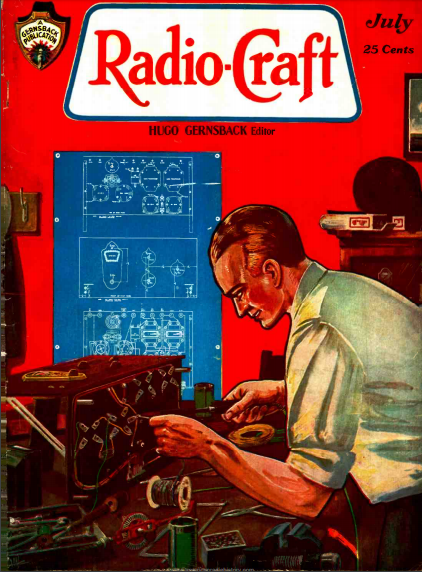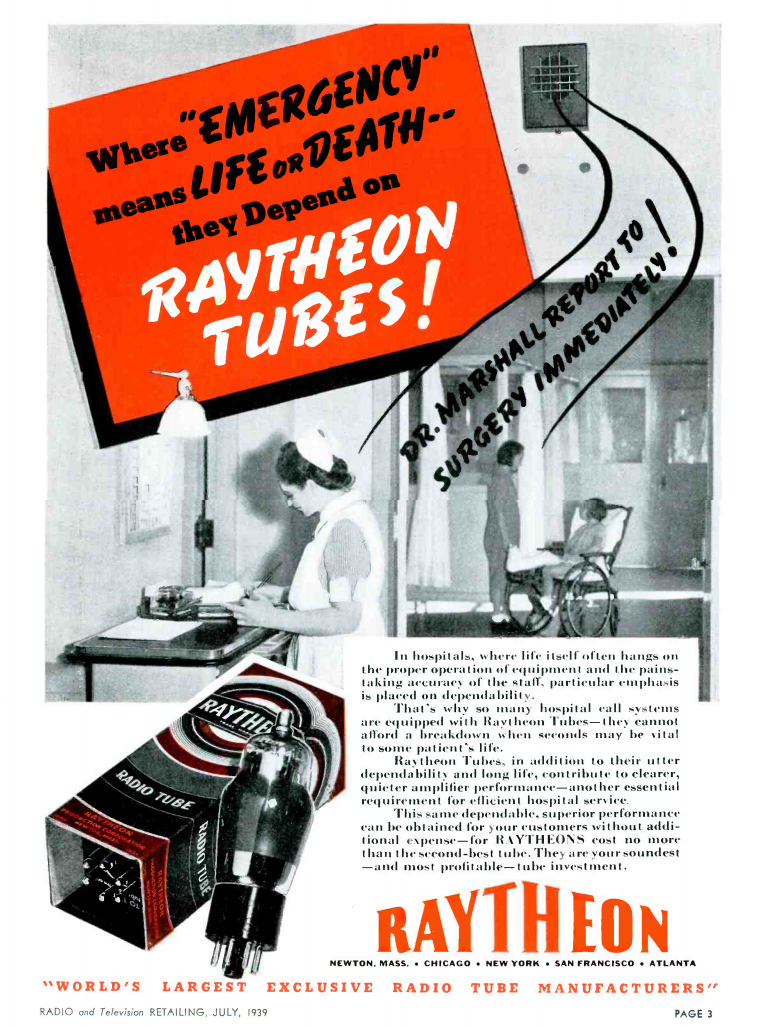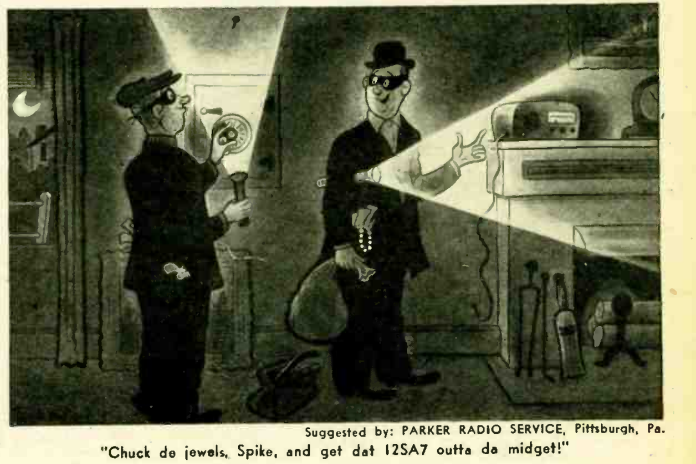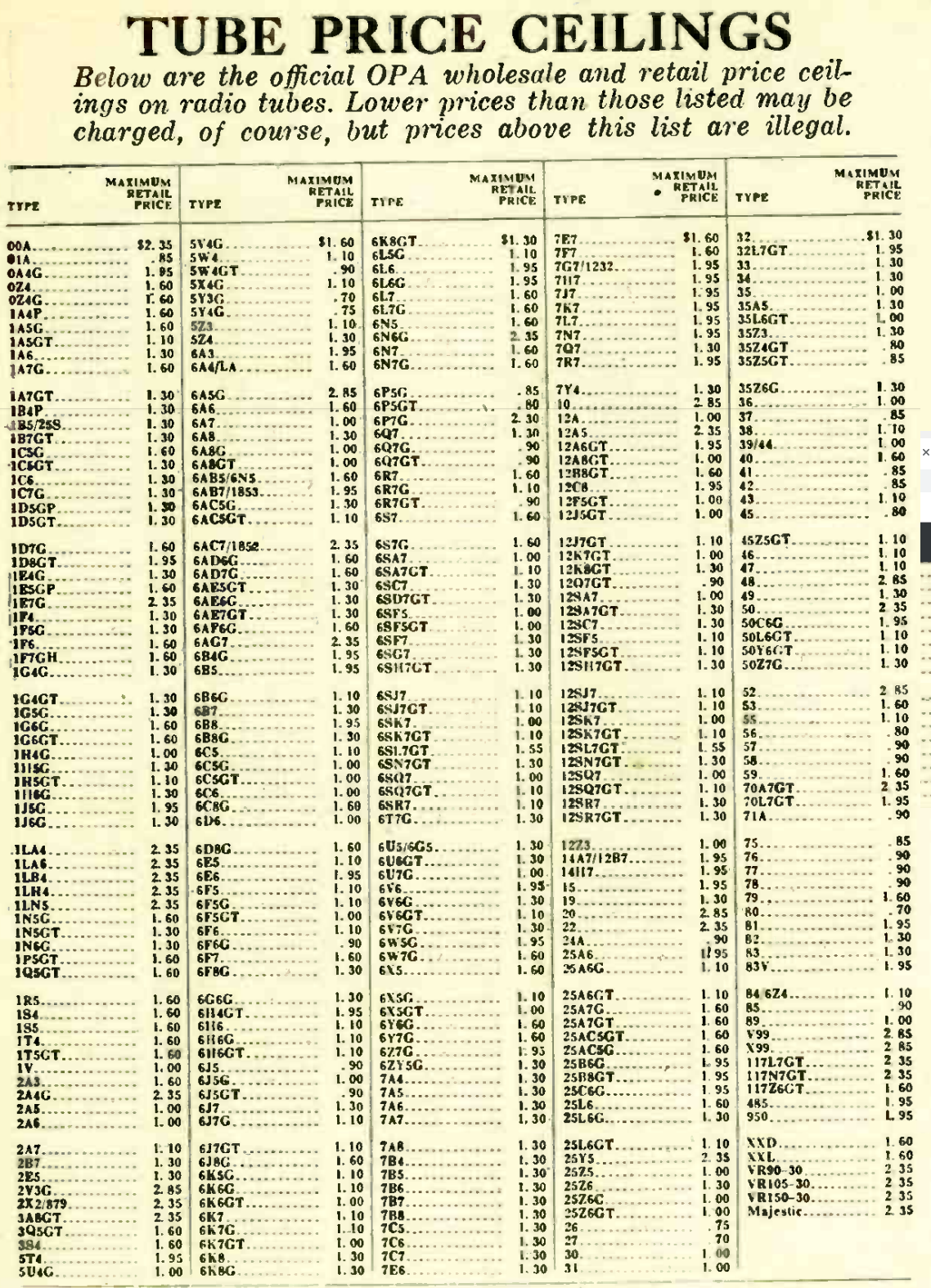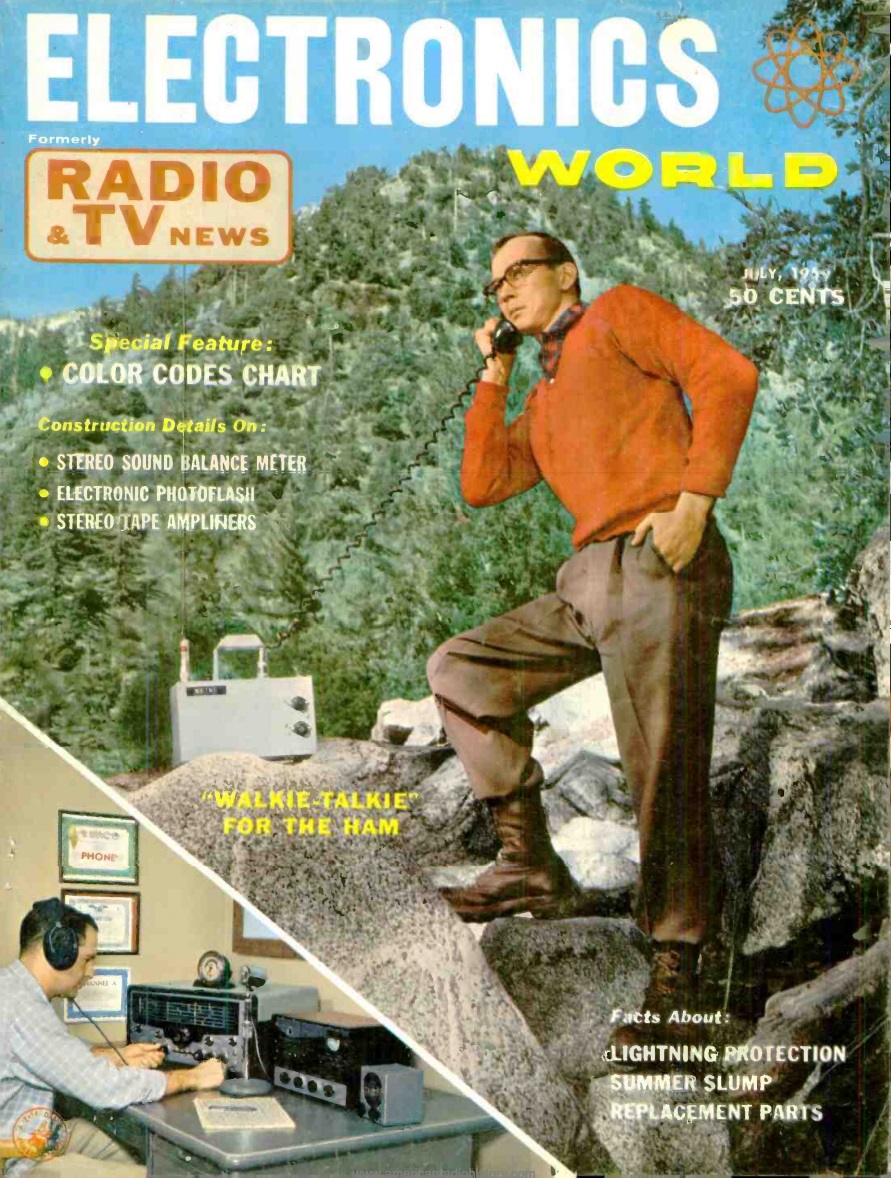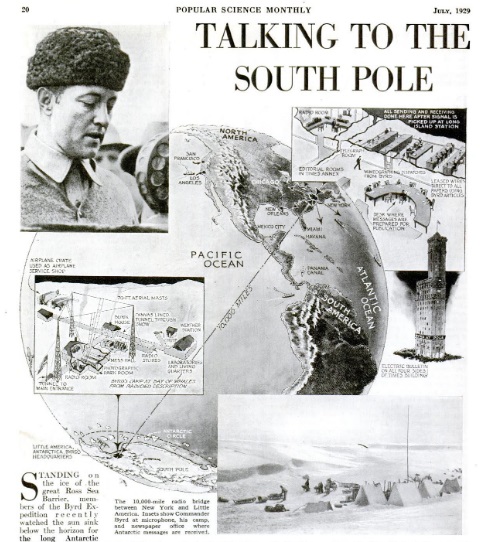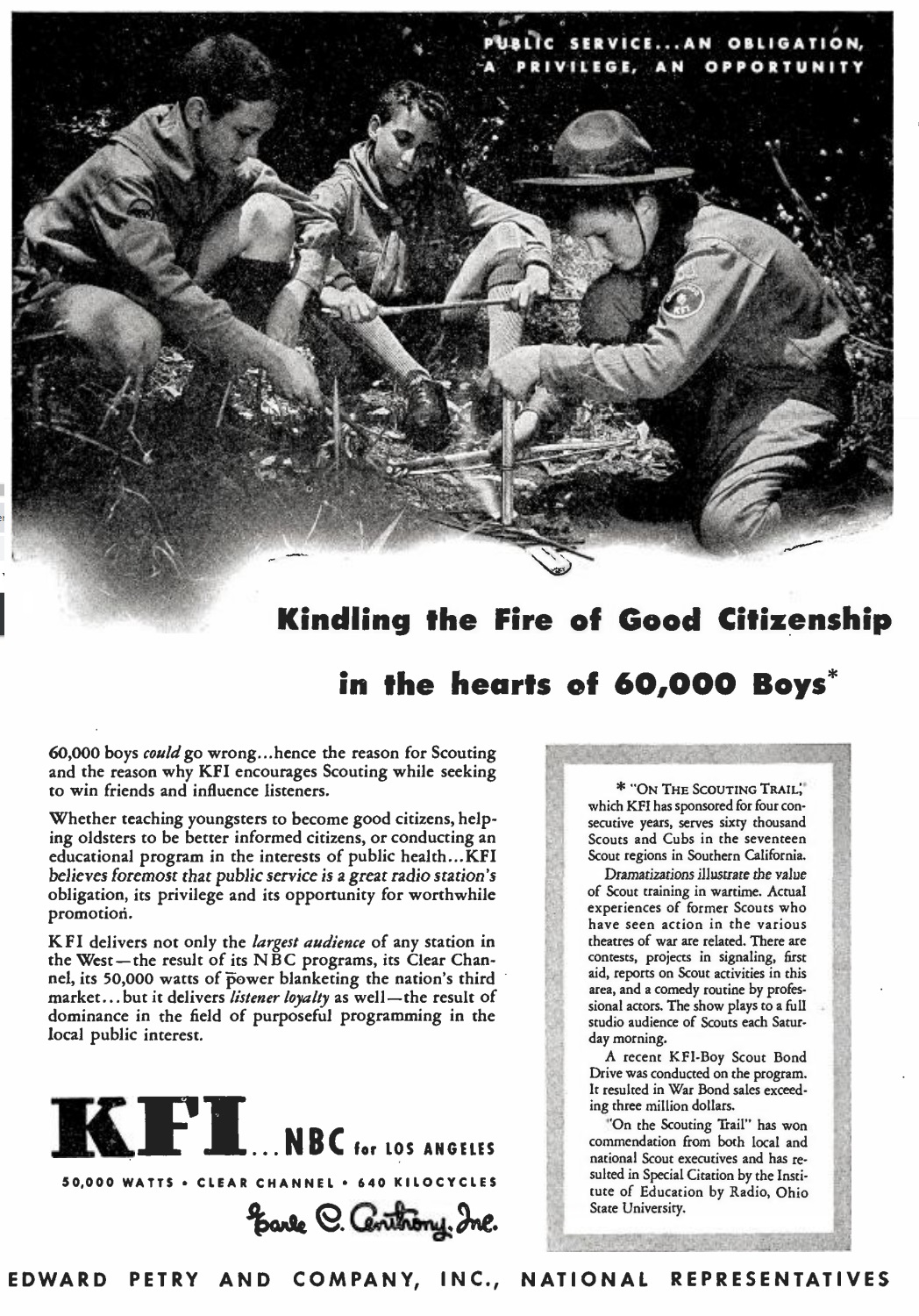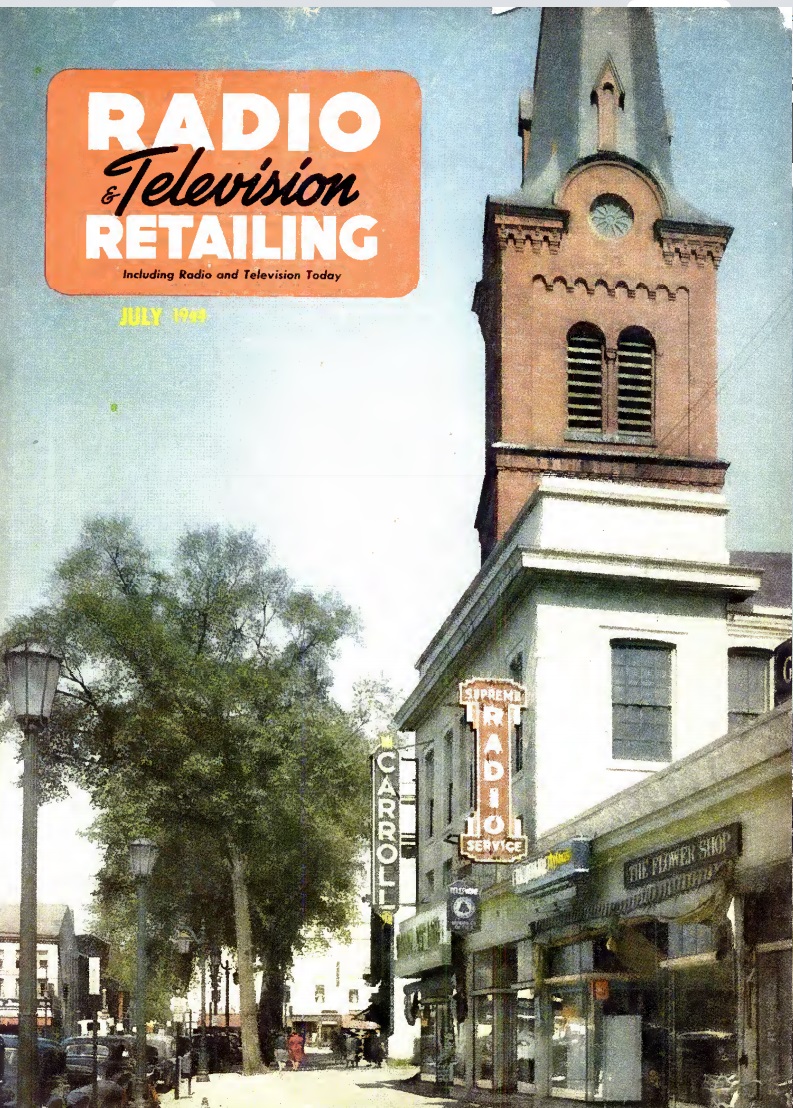 Seventy-five years ago this month, the cover of the July 1944 issue of Radio & Television Retailing showed this scene of downtown Westfield, MA, specifically, Supreme Radio Service, 28 Main Street. The store’s owner was Joseph R. Davich, who had gotten his start in radio at the age of fourteen, when he built sets “using a piece of coal or potato for a detector.” He reportedly also had a spark transmitter with a range of about six miles. He had been in the radio business since 1932, and had expanded into both large and small appliances in 1935.
Seventy-five years ago this month, the cover of the July 1944 issue of Radio & Television Retailing showed this scene of downtown Westfield, MA, specifically, Supreme Radio Service, 28 Main Street. The store’s owner was Joseph R. Davich, who had gotten his start in radio at the age of fourteen, when he built sets “using a piece of coal or potato for a detector.” He reportedly also had a spark transmitter with a range of about six miles. He had been in the radio business since 1932, and had expanded into both large and small appliances in 1935.
With wartime consumer manufacturing shut down, Davich had sold his last radio in the fall of 1943. Washers and ranges were soon also out of stock for the duration. The service business continued, but all of his regular technicians had departed, four to the armed forces, one to teaching, and one to a war plant. “Not a man of prejudices, but concerned solely with getting the work done, Davich is willing to train women, if they are interested and willing to learn.” His most recent protege was a 17 year old gird who had just graduated from high school.
The store’s record department was holding its own during the war under the management of a young woman. The magazine noted that records were paying the rent, with service completing the volume. Davich also had a government subcontract to produce plastic radio parts for submarine detector radar equipment. This contract employed five to eight men.
 If the New England church steeple looks slightly out of place in the picture, well, that’s because it is. A modern view of the shop from Google street view. The 1944 radio shop is in the spot where the Rovithis Realty sign is, and the building next door is very distinctive. But there’s no church steeple in the modern view. But this isn’t because the church isn’t there. It’s actually located a half block away. It’s actually the steeple of the First Congregational Church, as shown in the modern image at the right. Apparently, the magazine editors took a bit of artistic license and “photoshopped” in the nearby steeple.
If the New England church steeple looks slightly out of place in the picture, well, that’s because it is. A modern view of the shop from Google street view. The 1944 radio shop is in the spot where the Rovithis Realty sign is, and the building next door is very distinctive. But there’s no church steeple in the modern view. But this isn’t because the church isn’t there. It’s actually located a half block away. It’s actually the steeple of the First Congregational Church, as shown in the modern image at the right. Apparently, the magazine editors took a bit of artistic license and “photoshopped” in the nearby steeple.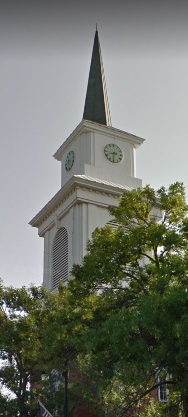
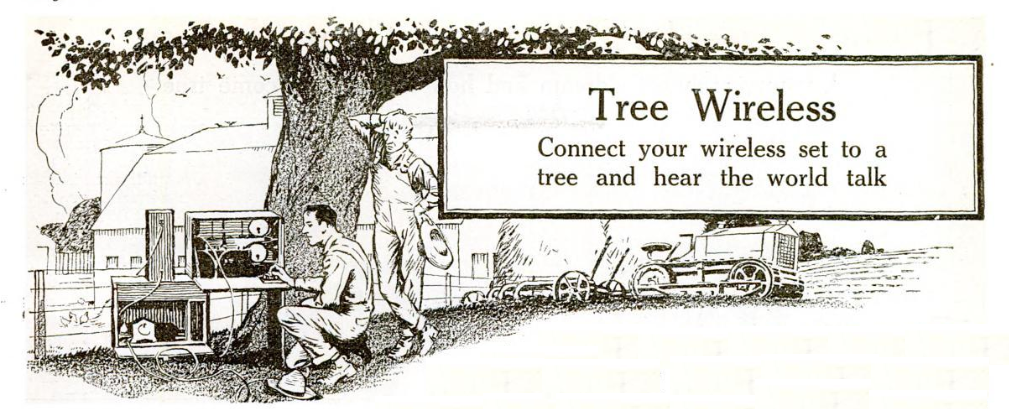 A hundred years ago this month, the July 1919 issue of Popular Science reported on the seemingly promising work done to date on using trees as radio antennas. The Signal Corps had been working on the problem during the War, and there was hope that explorers, farmers, lost Army units, or downed aviators could be in contact with the outside world as long as they were in the neighborhood of a good sized tree. The article reported that European stations had been pulled in with trees, and various methods of making the hookup were discussed.
A hundred years ago this month, the July 1919 issue of Popular Science reported on the seemingly promising work done to date on using trees as radio antennas. The Signal Corps had been working on the problem during the War, and there was hope that explorers, farmers, lost Army units, or downed aviators could be in contact with the outside world as long as they were in the neighborhood of a good sized tree. The article reported that European stations had been pulled in with trees, and various methods of making the hookup were discussed.
